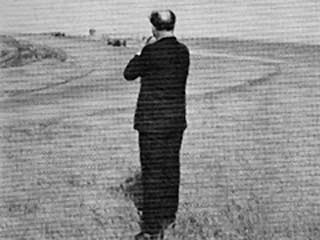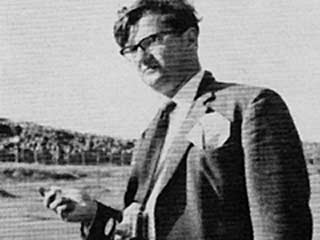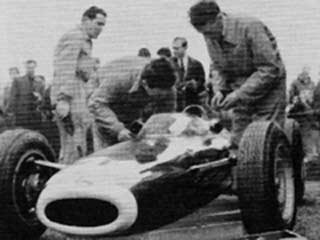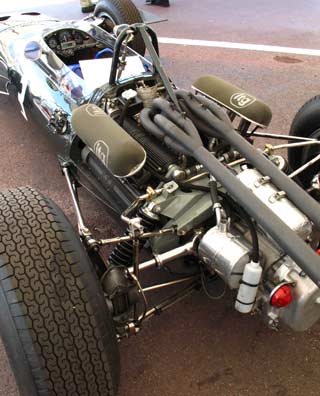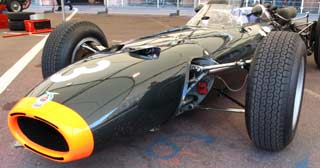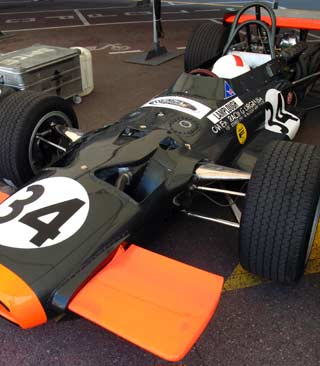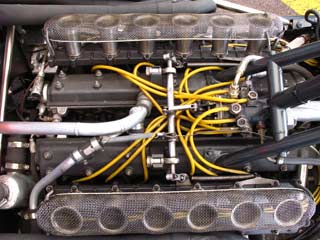 THE MONACO GRAND PRIX LIBRARY BY ROY HULSBERGEN THE MONACO GRAND PRIX LIBRARY BY ROY HULSBERGEN |
||||||||||||||||||||||||||||||||||||||||||||||||||||||||||||||||
|
B.R.M. |
British Racing Motors | ||||||||||||||||||||||||||||||||||||||||||||||||||||||||||||||
|
Tweet |
||||||||||||||||||||||||||||||||||||||||||||||||||||||||||||||||
BRM (British Racing Motors) was created in 1947 by Raymond Mays to represent the technology and experience of English car manufacturing and thus to make a stand against Italian and German manufacturers. BRM's first engine design was an extremely ambitious 1.5 litre supercharged V16. Rolls-Royce was contracted to produce centrifugal superchargers, rather than the more commonly used Roots type superchargers. Since his experience on the supercharging of the ERA engines, Berthon had been doing war-time work on aero-engines at Rolls Royce, Derby. The design concept of the V16 had not been used extensively on automobiles before so that design problems were many and the engine did not fire for the first time until June of 1949. It proved to be outstandingly powerful but its output was produced over a very limited range of engine speed. Engineer Tony Rudd was seconded to BRM from Rolls-Royce to develop the supercharging system and remained involved with BRM for nearly 20 years. The whole project was bought by Sir Alfred Owen in 1952 and BRM became an independent company achieving their first success in 1959 and reaching the top in 1962. As part of Owen's attempt to make BRM pay its way, the V8 engine was sold to privateers and appeared in a number of other chassis during the 1.5l formula, particularly in private Lotus chassis and in smaller marques such as BRP. A number of privateers acquired 1961-2 BRMs during this period, including Maurice Trintignant and Scuderia Centro Sud; these cars continued to race on for many years. Monocoque V8 cars were soon developed and these ran on through the 1.5 litre formula and performed useful service in the early races of the subsequent 3.0 litre formula. In 1965 Jackie Stewart was signed to partner Hill; he took his first Grand Prix win at Monza in his debut season, and won the first World Championship race of the new three-litre formula with a car fitted with a Tasman two-litre V8; once again BRM were not ready for the start of a new formula and the old cars continued to be used, even on occasion when the H16 was ready. For 1966, the engine regulations changed to permit 3.0 litre unsupercharged (or 1.5 litre supercharged) engines. BRM refused Peter Berthon and Aubrey Woods' proposal to build a V12, and instead built a strange engine, designed by Tony Rudd and Geoff Johnson, the H 16 (BRM P75), which essentially used two flat-8 engines (derived from their 1.5l V8) one above the other, with the crankshafts geared together. BRM found the H 16 attractive because it was initially planned to share design elements and components with the successful 1.5 litre V8. While the engine was powerful, it was also heavy and unreliable - Rudd claims that his drawings were not followed accurately and many of the castings were much thicker and heavier than he had specified. Jackie Stewart (who drove for BRM in this period) is believed to have said "This piece of metal is better used as a ship's anchor than as a power plant". At that time BRM earned the nickname of "British Racing Misery". BRM, Lotus and various privateers had been using enlarged versions of the BRM 1.5 V8 of up to 2.1 litres in 1966, as competitive 3.0 engines were in short supply in this first year of the new regulations. Lotus also took up the H16 as an interim measure until the Cosworth DFV was ready, building the Lotus 43 to house it, and Jim Clark managed to win the US Grand Prix at Watkins Glen with this combination. It was the only victory for this engine in a World Championship race. The H 16 was replaced by a V 12 designed by Geoff Johnson. It had been intended for sports car use, but was first used in F1 by the McLaren M5A. Back at the works, the early V12 years were lean ones. In 1967 the 2-valve layout gave about 360 bhp @ 9,000 rpm. In 1968 this had increased to 390 bhp @ 9,750 rpm. The first V12 chassis (P133) was designed independently by Len Terry; the subsequent P139 was designed and built in-house. John Surtees joined as the team's lead driver, with the semi-works Parnell team for driver development (notably Piers Courage and Chris Irwin). Surtees' time at BRM was not happy, and despite the fact that a ground effect 'wing car' was designed, this was never constructed and the team's performances were lacklustre. Surtees left after a single unhappy season (1969), along with Tony Rudd who went to Lotus (initially on the road-car side), and Geoff Johnson who departed for Austin Morris. The team regrouped with new drivers and Tony Southgate as designer, and gained its first V12 victory for Pedro Rodríguez at the 1970 Belgian Grand Prix in a P153, with further victories for Jo Siffert and Peter Gethin in 1971 in the P160. The team had reached one of its intermittent peaks of success. Sadly both Siffert and Rodriguez were killed before the 1972 season and the team had to regroup completely again. Their last victory was when Jean-Pierre Beltoise drove a stunning race to win the rain-affected 1972 Monaco Grand Prix with the P160. The 1972 campaign was generally chaotic: having acquired major sponsorship, Louis Stanley originally planned to field up to six cars (three for established drivers, three for paying journeymen and young drivers) of varying designs including P153s, P160s and P180s and actually ran up to five for a mix of paying and paid drivers until it became obvious that it was completely overstretched -- the team's sponsors insisted that the team should cut back to a more reasonable level and only three cars were run in 1973 for Beltoise, Lauda and Regazzoni. In the early 70’s Alfred Owen passed control to the husband of his sister, Louis Stanley and BRM slided into decline. Grand Prix contested: 197 from 1951 - 1974 World Championship Constructors points:
|
|
|||||||||||||||||||||||||||||||||||||||||||||||||||||||||||||||
BRM 15 - 1949-1954
|
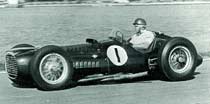 |
|||||||||||||||||||||||||||||||||||||||||||||||||||||||||||||||
BRM P25 - 1955 - 1959 |
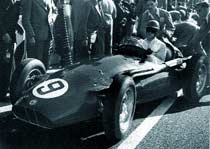 |
|||||||||||||||||||||||||||||||||||||||||||||||||||||||||||||||
BRM P57 - 1961- 1963 |
 |
|||||||||||||||||||||||||||||||||||||||||||||||||||||||||||||||
BRM P61 - 1963/64 |
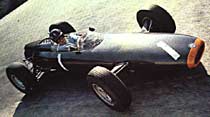 |
|||||||||||||||||||||||||||||||||||||||||||||||||||||||||||||||
BRM P83 - 1965 |
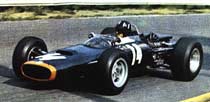 |
|||||||||||||||||||||||||||||||||||||||||||||||||||||||||||||||
BRM P126/133 - 1968/69 |
 |
|||||||||||||||||||||||||||||||||||||||||||||||||||||||||||||||
BRM P153 - 1970 |
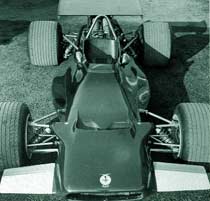 |
|||||||||||||||||||||||||||||||||||||||||||||||||||||||||||||||
BRM P160 - 1971/72/73/74 |
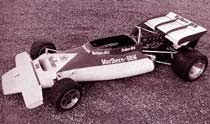 |
|||||||||||||||||||||||||||||||||||||||||||||||||||||||||||||||
|
||||||||||||||||||||||||||||||||||||||||||||||||||||||||||||||||


